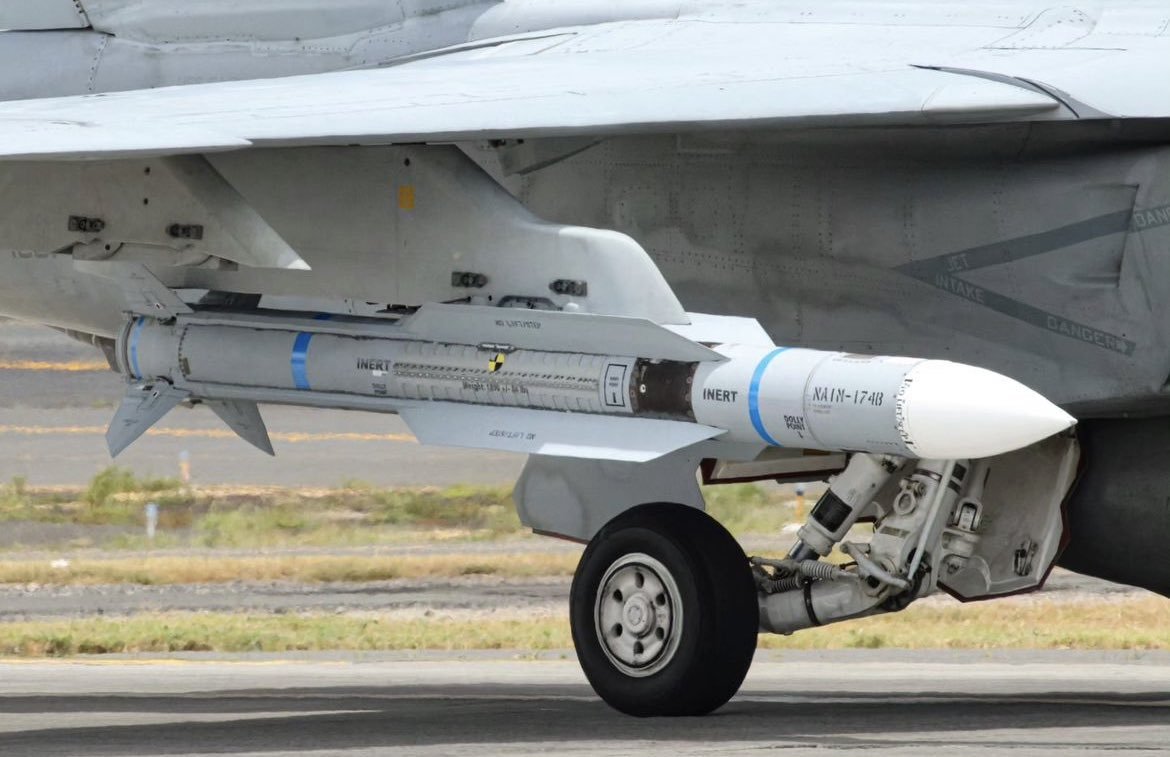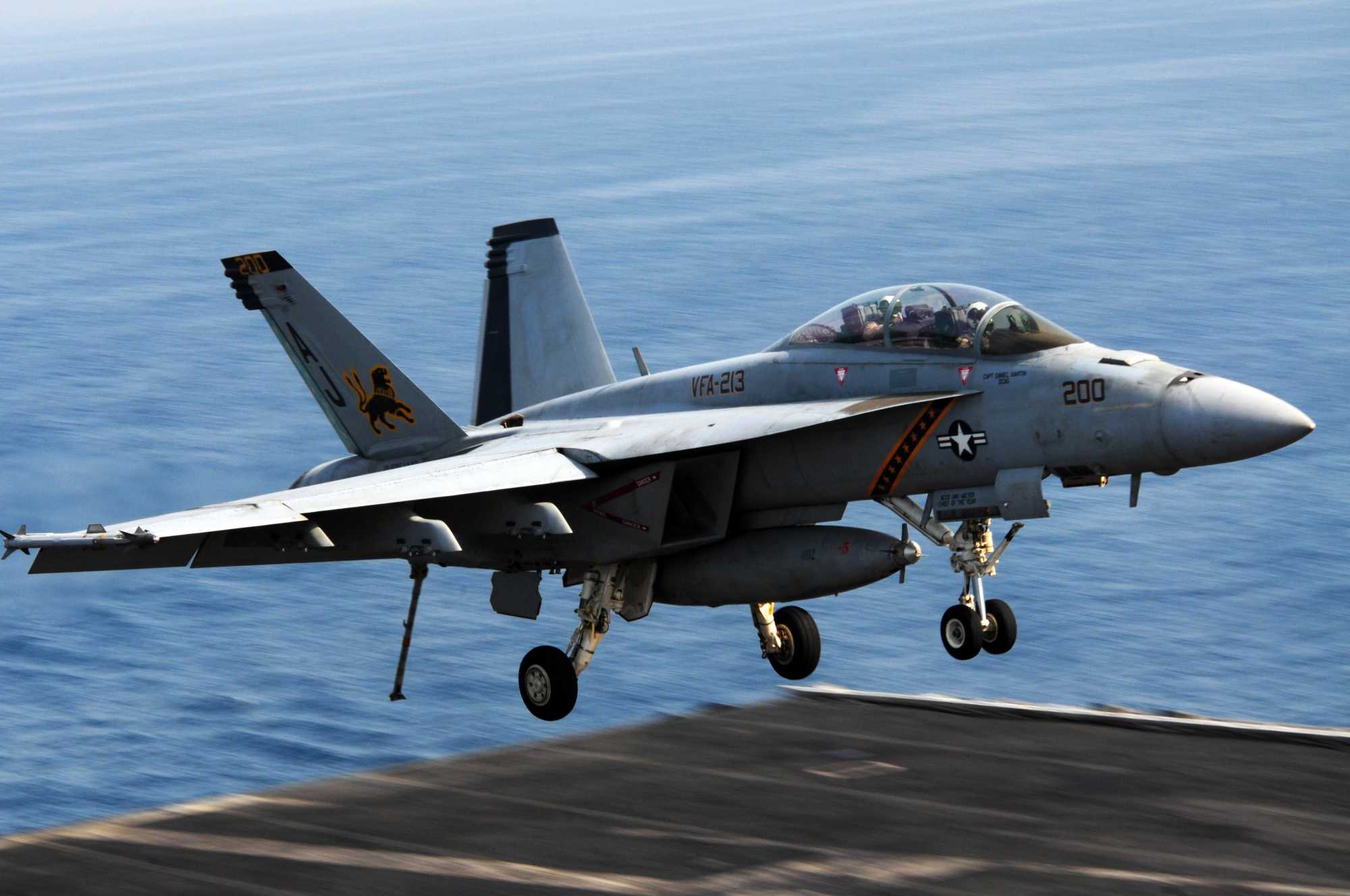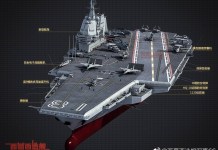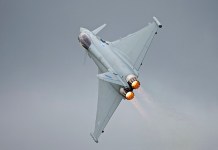The US Navy’s F/A-18E/F Super Hornet was spotted flying with the lethal air-launched version of the SM-6 missile, a weapon that has really been bothering China.
US To Withdraw “Banned” Typhon Missile System From Philippines That Gave Sleepless Nights To China
On July 2, 2024, two AIM-174B missiles — the air-launched version of the SM-6 missile — carried by an F/A-18E Super Hornet from the VFA-192 “Golden Dragons” on the USS Carl Vinson aircraft carrier were photographed as the aircraft taxied at Joint Base Pearl Harbor-Hickam, Hawaii.
The aircraft is taking part in the Rim of the Pacific (RIMPAC) drills.
The designation AIM-174B on the missiles indicated that they were air-to-air missiles with a very long range. However, these air-launched variants of the SM-6 also possess the ability to act as quasi-ballistic missiles and strike high-priority ground targets like air defense sites and warships.
The new photographs were taken by aeros808 and published on Instagram. The missiles were said to have the designation NAIM-174B printed on the front end and were labeled as inert without a warhead.
The recent development comes almost a month after photographs of a US Navy F/A-18 Super Hornet appeared carrying what looked like an air-launched variant of the SM-6 in June 2024. Observers paid special attention to the photos, as it is rare to see an SM-6 missile on a Super Hornet.
Air launched SM-6 (XAIM-174B) at RIMPAC 24
📸: aeros808 on Instagram pic.twitter.com/1cFl7LPQvl— Doha (@Doha104p3) July 3, 2024
At the time, several experts noted that the aircraft might have been a launching pad for an SM-6 to test some of its newer capabilities against a hostile target. This makes the appearance of Super Hornets equipped with these missiles at RIMPAC even more significant.
RIMPAC is the largest international maritime exercise hosted by the United States and is keenly watched by its adversaries, including China and Russia. As the photographs started going viral on social media, experts noted that the Super Hornet equipped with an air-launched SM-6 may have made an appearance to test tactics or even participate in some live-fire drills.
Vampire Rhino with what looks like an AGM-84H/K SLAM-ER painted in the orange test paint. Maybe someone else can give a better ID of what it is? pic.twitter.com/kIMiWFXcBo
— StinkJet (@StinkJet) June 3, 2024
Some reports noted that the N prefixed to the AIM-174B could denote special tests and modifications. As per the US Navy quoted by Naval News, “The SM-6 Air Launched Configuration (ALC) was developed as part of the SM-6 family of missiles and is operationally deployed in the Navy today.”
A US Navy F/A-18 Super Hornet, most likely from Air Test and Evaluation Squadron (VX) 9, was seen flying with what appeared to be the same missile on April 17, 2024, approximately 60 miles north of Naval Air Weapons Station China Lake. Operational Test and Evaluation (OT&E) is a phase of testing carried out on production weapons, or production representative weapons, to ascertain whether systems are operationally effective and suitable to support a Full-Rate Production (FRP) decision.
The latest appearance, with the designation, is significant because it confirms for the first time that a missile that has so far only been seen as a concept aimed at adding more teeth to the Super Hornets has become a reality and is likely being tested so that it could be fielded when it is needed.
Super Hornets With AIM-174B: What Do We Know?
The idea of integrating SM-6 missiles with Super Hornets to increase the US Navy’s capability has been discussed over the years. In 2018, a suggestion was made to incorporate the SM-6 Dual I SAM into the Super Hornet, converting it into a long-range air-to-air missile.
Even though the Super Hornets can launch from US aircraft carriers and are outfitted with some of the most advanced weapons in the country’s arsenal, they cannot strike targets on land, at sea, or over great distances at nearly hypersonic speeds. This is where the air-launched variant of the SM-6 comes in.
Since its inception, the SM-6 was intended to be a surface-launched weapon that could attack air-breathing airborne threats at long range, ballistic missiles nearing the end of their flight, and, in certain situations, even hypersonic weapons. However, it has since been modified and adapted by all services.

Raytheon describes the SM-6 missile as: “The SM-6 missile is three missiles in one. It’s the only weapon that can perform anti-air warfare, anti-surface warfare, and ballistic missile defense or sea-based terminal missions.” Analysts reckon the SM-6 missile has developed into a multi-role powerhouse. It is also a perfect example of how adding new technology to outdated weapons can produce amazing outcomes.
The US Navy’s combat capability would be bolstered by the integration of air-launched versions of these missiles with its Super Hornet workhorse because, when fired quickly and from a high altitude, these missiles can destroy ships and even incoming ballistic missiles at a distance equivalent to that of enemy aircraft hundreds of miles away.
This is believed to be a promising capability in a conflict with adversaries like China.
With the AIM-174B, the Super Hornet would have an air-to-air weapon that could counter a wide spectrum of aerial threats hundreds of miles away. It is a major advantage over the AIM-120 AMRAAM (Advanced Medium-Range Air-to-Air Missile) now in use, and it is probably also farther than the still-under-development AIM-260 JATM (Joint Advanced Tactical Missile).

One major value addition of the usual SM-6 is its potential to be employed against high-priority ground and marine targets. Analysts have reckoned that this characteristic may also apply to the AIM-174B, placing it in the quasi-ballistic missile class—a weapon class that is becoming increasingly significant in the air-launched arena.
With the threat of a conflict with China never off the table and China’s rapid production and deployment of its long-range missiles, the induction of AIM-174B would be a massive boost to US firepower. It would allow the US Navy to hit enemy aircraft and strike the sophisticated Anti Area/Access Denial (A2/AD) system.
More importantly, however, it would aid in defending the forward territories from a hostile attack. The Navy’s engagement range to intercept flying targets would be extended by the AIM-174B launch platform, which would be integrated with E-2D (an American all-weather, carrier-capable tactical airborne early warning aircraft), F-35, and the Aegis under the Naval Integrated Fire Control-Counter Air (NIFC-CA) architecture. Currently, the Navy uses the baseline SM-6 to intercept naval targets.
The US Navy’s Super Hornets are expected to be part of any conflict that the country may have to fight in the Indo-Pacific. The service has already started receiving upgraded variants of the aircraft and has placed orders to add more of these jets to its inventory with an eye on combat. Arming the aircraft with sophisticated munitions to make its performance more robust becomes imperative: the air-launched SM-6 appears to be the answer.
- Contact the author at sakshi.tiwari9555(at)gmail.com
- Follow EurAsian Times on Google News




